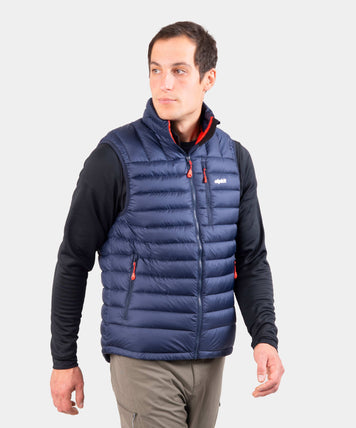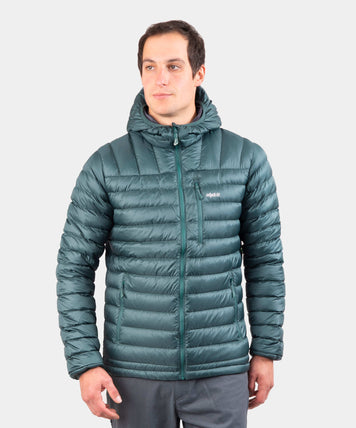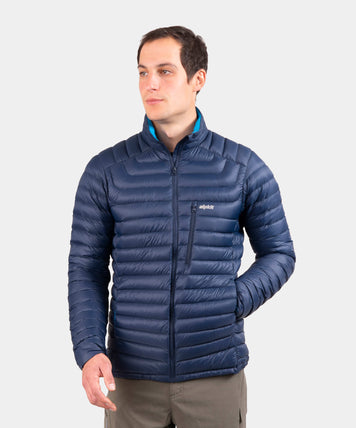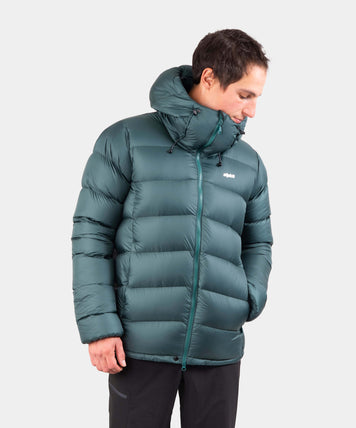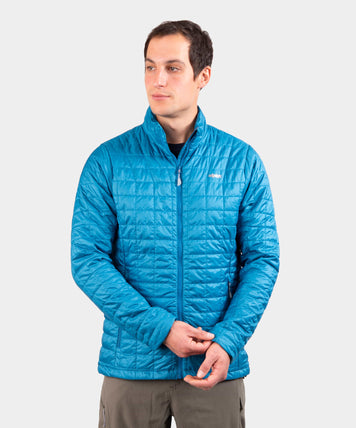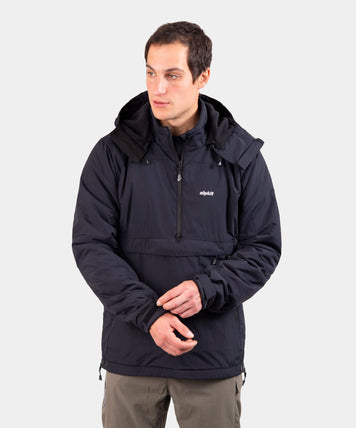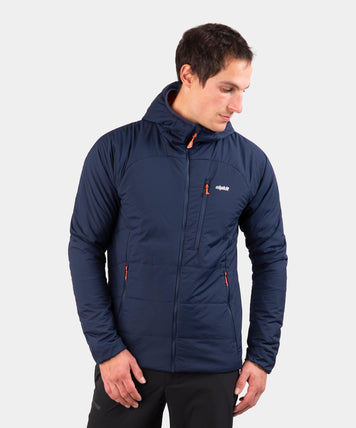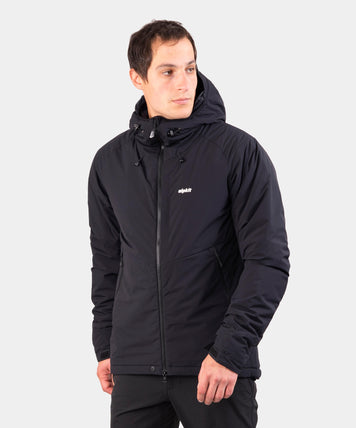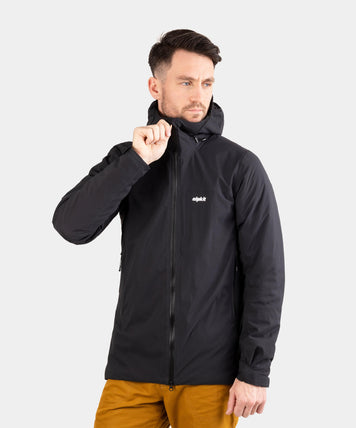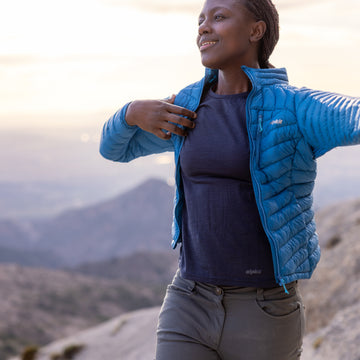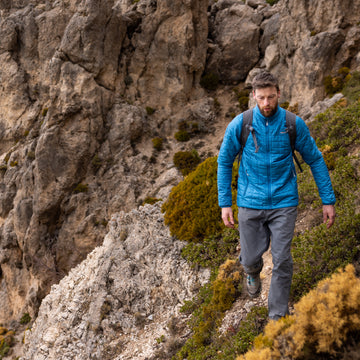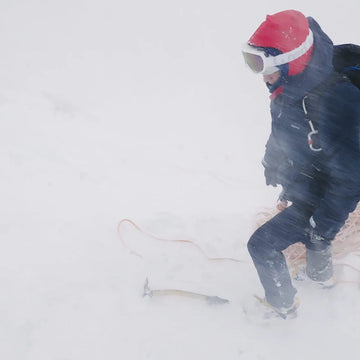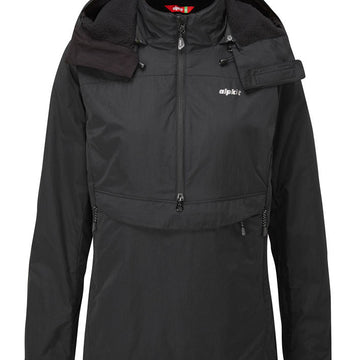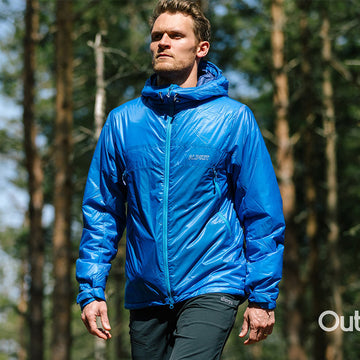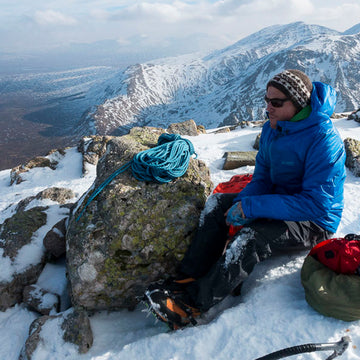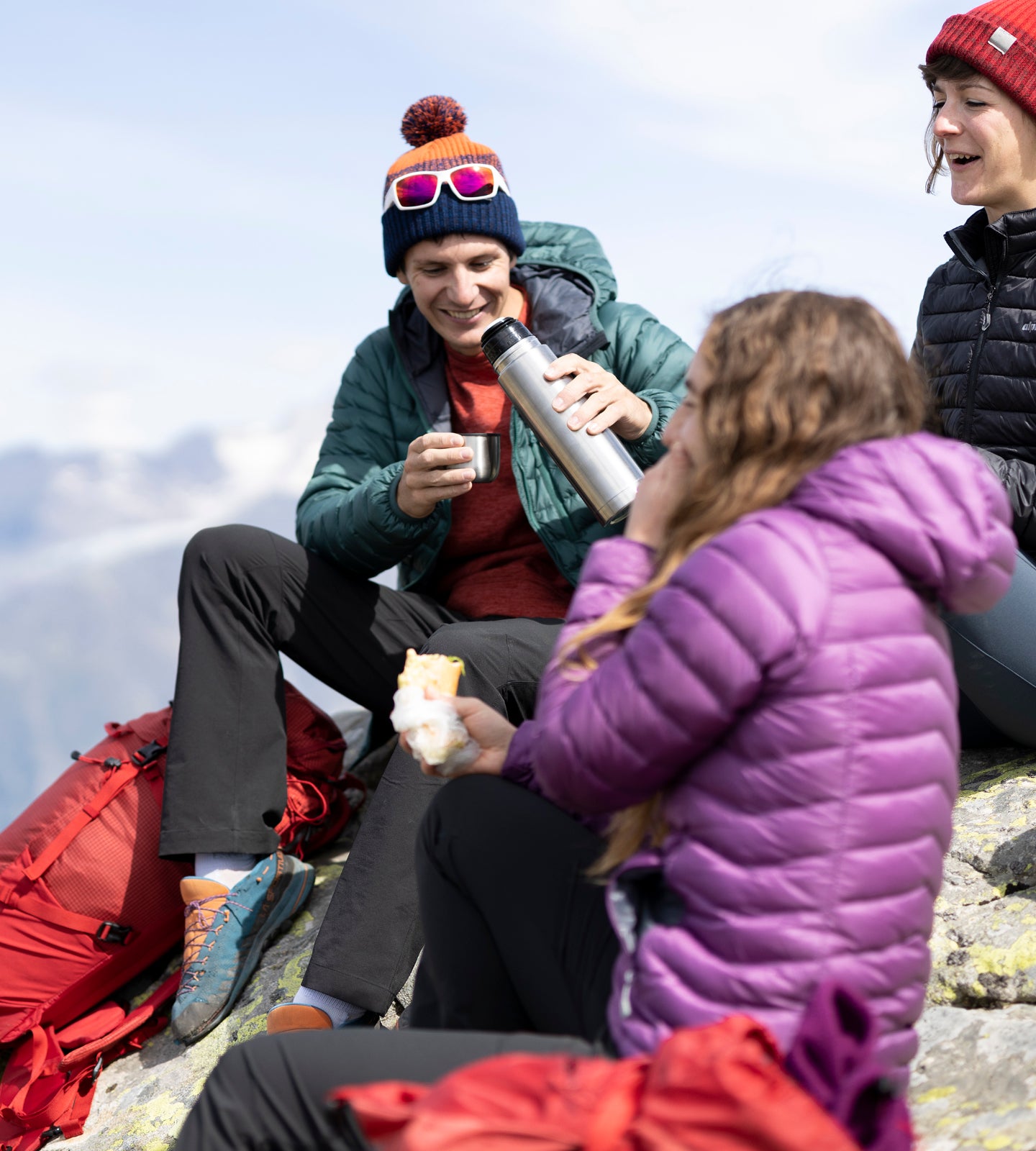
With its serene landscapes blanketed in snow and crisp, clean air, winter hillwalking offers a unique and breathtaking outdoor experience. However, braving cold temperatures and icy winds can be intimidating for many. The good news is that with suitable insulating clothing, you can embrace the wonders of winter hillwalking while staying warm, comfortable, and safe throughout your adventure.
Contrary to what you might think, cold weather doesn't have to mean discomfort or freezing limbs. It opens up a world of opportunities to explore nature in its most tranquil and pristine form. With the correct clothing and layers, you can harness the magic of winter landscapes, revel in the peace and solitude of the hills, and create cherished memories—all while remaining cosy warm.
This guide invites you to discover the art of staying warm while hillwalking in winter. We will unveil the secrets of insulation and introduce you to the essential winter gear and the art of layering. We will provide you with practical tips and insights to keep the cold at bay. By the time you finish reading, you'll have the knowledge and confidence to embrace winter hillwalking with open arms, knowing you can conquer the chill and experience the colder seasons like never before.
What is insulated clothing?
Insulated clothing is an important part of your winter layering system. It is designed to provide warmth, comfort, and protection from the elements while allowing you to maintain mobility and adapt to changing weather conditions through your activity.
The benefits of insulated clothing for hillwalkers
Insulated clothing enables hillwalkers to extend their hiking season into colder months, providing opportunities to catch nature off-guard, access to less crowded paths, health benefits, and the chance to witness the stunning beauty of winter landscapes.
By embracing insulated gear you can comfortably immerse yourself in the wonders of nature year-round.
- Warmth and Comfort: The primary role of insulated hillwalking clothing is to prevent heat loss. It acts as a thermal barrier, retaining the body's natural heat and keeping you comfortable even in cold temperatures. The more comfortable you are the longer you can focus on the challenges of the walk and less time listening to the rattling of your bones. That said, for true comfort on the hill, it is important to be able to regulate your body temperature if you get too hot.
- Unrestricted Movement: Insulated hillwalking clothing is designed with hikers in mind. Your insulation shouldn't hinder your walking style, whether you enjoy a brisk march or a slow amble. Modern designs balance warmth and flexibility, allowing you to easily navigate challenging terrain, ascend steep slopes, and work well with other equipment you are carrying - such as a rucksack. This unrestricted mobility contributes significantly to the overall hiking experience, making it more enjoyable and less restrictive.
- Protection from the Elements: Insulated clothing acts as a protective shield against the cold, but hillwalking in Autumn and Winter involves exposure to other challenging weather conditions, including rain, snow and wind. Waterproof and windproof outer layers can be added to keep moisture and biting winds at bay, ensuring you stay dry and warm and not beaten back by adverse weather.
Win Winter and extend the hiking season with insulating clothing
While mere mortals gather before a roaring fire, you can be outside winning winter. Insulated clothing extends the hiking season well into the colder months.
- Cold-Weather Versatility: With the right combination of insulated clothing, hillwalkers can venture out when the temperatures plummet and the landscape transforms into a winter wonderland. This versatility allows individuals to enjoy hiking year-round, discovering the unique beauty of paths blanketed in snow or the tranquillity of frosty landscapes.
- Exploring Less Crowded Trails: Many popular hiking trails, especially in the National Parks, are significantly less crowded during the colder months. This presents an opportunity for suitably dressed hillwalkers to explore nature with a sense of solitude and serenity. The absence of crowds will enhance your connection to the natural environment and create a more immersive and peaceful hiking experience.
- Opportunities for Encounters with Wildlife: Winter hillwalking offers the chance to encounter wildlife that may be less active or more visible during this season. As animals forage for food in the snow, you may spot deer, foxes, birds, and other creatures, adding an exciting dimension to your hiking experience.
- Challenge and Personal Growth: Hiking in colder conditions can be more physically and mentally challenging. It requires additional preparation, navigation skills, and adaptability to changing weather. Hillwalkers who have embraced the cold months often feel more confident and capable outdoors. We have some tips to help you with this later.
- Picture Postcard Beauty: The transformation of mountain landscapes under a blanket of snow or frost offers a feast of visual experiences. Frozen lakes, snow-covered trees, and icicle-adorned cliffs create postcard-worthy scenes exclusive to the winter season. Hillwalkers exploring these landscapes are rewarded with breathtaking and memorable panoramas. If you cannot find a stamp for your postcard, use your phone to show your friends winter hasn't stopped you going nice places to do good things.
The dual role of insulated clothing
Insulated clothing plays differing but equally important roles in hillwalking when active and when stationary:
Active hillwalking
- Temperature Regulation: When hiking uphill or stomping along flat terrain, your body generates heat. Insulated clothing worn during active hillwalking should help regulate your temperature by providing warmth without causing overheating. It should allow excess heat and moisture (sweat) to escape to prevent you from becoming too hot and sweaty. Temperature regulation can be achieved through the material used in the insulation or the garment's design through zips and vents. There may be times where the trail is so gnarly and you are working so hard you just have to stow your insulated jacket away in your rucksack. When this happens you can feel smug knowing you purchased a jacket that is highly compressible.
- Moisture Management: If you are the type who likes to exert yourself, you may sweat, even in cold conditions. Insulated clothing with moisture-wicking properties helps transport sweat away from your skin to keep you dry and comfortable. This moisture management is essential to prevent hypothermia when you stop moving.
- Breathability: Insulated layers worn during activity should be breathable, allowing moisture to escape so the insulation does not wet out. This breathability ensures you maintain comfort and can keep the garment on while hiking without feeling clammy.
- Mobility: Hillwalking often involves dynamic movements, such as ascending steep slopes, scrambling, or traversing uneven terrain. Insulated clothing should provide a full range of motion without restricting movement, allowing you to navigate these challenges easily.
Stopping to take in the views
- Retaining Heat: When you stop and rest for a snack, your body generates less heat, making you more susceptible to feeling cold. Insulated clothing's primary role during your stationary periods is to retain the heat your body has generated during activity, preventing it from escaping into the cold environment.
- Thermal Comfort: Insulated clothing keeps you warm and comfortable during breaks, lunch stops, or when enjoying the view. This is especially important during extended rest periods when your body temperature drops rapidly. Staying warm allows you to relax, refuel, and recharge, enhancing your overall hillwalking experience.
- Preventing Rapid Cooling from Wind and Cold: Stationary periods can lead to rapid cooling if you're not adequately insulated. Insulated layers help maintain a stable body temperature, reducing the risk of hypothermia during rest breaks or huddling behind a summit cairn.
- Layering: When stationary, you may add additional layers, such as a down jacket, hat and gloves to provide extra warmth. Layering during rest stops allows you to adapt to temperature changes and ensures you stay cosy.
Your insulated clothing serves different roles when active and stationary. While active, it helps regulate temperature, manage moisture, and provide mobility. When inactive, its primary role shifts to retaining heat, preventing rapid cooling, and ensuring comfort and well-being during rest breaks. Properly chosen and layered insulated clothing is essential for a safe and enjoyable hillwalking experience in varying conditions, and in the mountains boy can they vary!
Insulated Jackets for Hillwalking: What You Need to Know
Insulated jackets come filled with natural down, synthetic insulation or fleecy fibre pile. They create an insulating loft, trapping air between their feathers or fibres. This lofted air is an efficient insulator, making insulated jackets warmer than many other outdoor layers.
Down Jackets for Hillwalking
- Down jackets are filled with lightweight, fluffy feathers from ducks and geese, creating an excellent insulating loft with minimal weight.
- Despite innovations in synthetic insulation, down remains the top choice for its warmth-to-weight ratio, compressibility, and resilience.
- Ethically sourced down, certified by the Responsible Down Standard, ensures high animal welfare standards.
Understanding Fill Power and Fill Weight
- Fill power (FP) measures the loft and fluffiness of the down. A higher FP down provides a better warmth-to-weight ratio.
- Fill weight measures the quantity of down in a jacket. A jacket's warmth depends on both fill power and fill weight.
Duck vs. Goose Down
- Goose down typically has higher fill power and is more expensive than duck down.
- Duck down has a lower fill power, requiring more volume to achieve the same warmth as goose down, resulting in a bulkier and heavier jacket.
Box Wall vs. Stitch-Through Construction
- All down jackets feature baffles to hold down in place. Stitch-through construction stitches through the jacket fabric, creating lightweight and compressible jackets but can cause cold spots.
- Box wall construction uses dividers between baffles, allowing down to loft better but adding weight and reducing compressibility.
Hydrophobic Down
- Down is naturally hydrophobic (a fancy word to say it repels water) but can clump and lose insulation when wet. Hydrophobic down is treated with a water-repellent coating, extending its resistance to moisture.
Synthetic Insulation for Hillwalking
- Synthetic jackets use polyester fibres that mimic down's warmth, lightness, and compressibility.
- Unlike down, synthetic insulation retains its insulating properties when wet, making it more suitable for damp conditions and active use.
Understanding Synthetic Insulation Measurements
- Synthetic insulation is measured in grams per square meter (gsm or g/m²). This measurement is used to compare jackets using the same type of insulation.
PrimaLoft® Synthetic Insulation
- This is the good stuff. PrimaLoft® is a leading synthetic insulation brand known for its water-resistant properties and warmth-to-weight ratio. You can find it in our range of synthetic jackets.
- PrimaLoft® offers various insulation types, including Silver Eco, Silver ThermoPlume®, Silver Hi-Loft Ultra, Gold P.U.R.E.™, and Gold Active.
- Active insulation combines with breathable or stretchy fabrics, ideal for aerobic activities. It allows moisture and excess heat to escape.
Fleece Insulation for Hillwalking
- High-wicking fleece offers superior comfort in damp weather.
- Fleece provides versatility and ease of use. Designed to be worn directly over bare skin or as a top layer over a base layer.
- Fleece jackets often excel in durability for rugged outdoor use in a functional design with convenient elements like zip-off hoods, and pit-to-hem vents for heat regulation.
Choosing the best Insulated Jacket for your forays into the hills
Consider factors like warmth-to-weight ratio, durability, waterproofing, fit, baffles, hood and zips when selecting an insulated jacket for hillwalking.
Understanding the differences between down and synthetic options, construction methods, and key features will help you choose the right jacket for your hillwalking adventures. Please do take the time to consider sustainability and ethical sourcing. We work very hard to bake these considerations into all of our products, designing products that meet you expectations without compromises.
Preparing for cold-weather hillwalking
Good insulated clothing (as part of your layering system) will get you a long way into the winter hills, but you should never underestimate the importance of adequate mental and physical preparation. This isn't something you can buy off the shelf but we can offer a few hints and tips.
The Importance of Physical Preparation for Hiking in Cold Weather
- Building Cold-Weather Resilience: Hiking in cold weather places unique physical demands on the body. At best you will have a cold runny nose, at worst you could develop hypothermia. Preparing your body for these challenges is crucial. Cold weather can increase the risk of muscle strains and injuries, so physical preparation helps build resilience.
- Enhancing Circulation: Cold weather can constrict blood vessels, potentially reducing circulation to extremities. Physical training can help improve overall cardiovascular health and circulation, ensuring that your body can efficiently distribute warm blood to your fingers and toes. If you have little ones in your backpack they will also be more susceptible to the cold, so remember to get them out running around at frequent intervals.
- Maintaining Core Strength: Cold weather hillwalking often involves carrying additional gear and navigating uneven terrain, which can strain your core muscles. A strong core helps maintain balance, posture, and stability, reducing the risk of falls or injury.
Improve Stamina, Endurance, and Cold-Weather Resilience
- Cardiovascular Training: Regular cardio workouts, such as jogging, cycling, or brisk walking, enhance overall stamina and endurance. These activities also help improve lung capacity, ensuring your body can efficiently utilise oxygen in cold conditions.
- Strength Training: Incorporate strength training exercises that target major muscle groups, including squats, lunges, deadlifts, and planks. Strengthening your muscles improves stability and helps carry the added weight of winter gear.
- Cold Exposure Training: Gradual exposure to colder temperatures during workouts can help your body adapt to the cold. Start with shorter cold sessions and gradually increase the duration over time. This process can enhance cold-weather tolerance. I heard a rumour that Walter Bonatti used to train for his Alpine climbs by riding his motor bike with no shirt in the winter. I don't advise you do that, I don't even know if it is true, take small steps you are supposed to be having fun.
- Stamina-Building Hikes: Plan longer hikes at varying elevations and terrain to build endurance specific to hiking. Increasing the duration and difficulty of your walks over time will prepare you for challenging cold-weather walks.
Mental Aspects of Preparing for Winter Hillwalking
- Mental Resilience: Hiking in cold weather can be mentally demanding. It's essential to mentally prepare for the challenges, including reduced daylight hours, harsh conditions, and the potential for isolation. Developing mental resilience through meditation, visualisation, or mindfulness exercises can help you stay focused and positive.
- Stay Informed and Prepared: Knowledge is a powerful tool for mental preparation. Research your route, study the map and identify potential hazards before hiking. Check the weather conditions, here in the UK we have an excellent Mountain Weather Information Service. Knowing what to expect and being prepared reduces anxiety and enhances confidence.
- Mindfulness on the Trail: Stay present and mindful of your surroundings during the hike. Pay attention to how your body feels, watch for signs of cold-related issues like frostbite or hypothermia, and stay attuned to changes in weather. Being present in the moment helps you make informed decisions and respond effectively to challenges.
- Emergency Preparedness: Mentally preparing for emergencies is vital. Knowing how to react if you or a fellow hillwalker encounters trouble can reduce panic and promote effective problem-solving. Carry essential safety and first-aid gear and learn how to use it.
- Group Dynamics: If hiking with a group, communicate openly and honestly with your companions. Just because you have dressed appropriately don't assume everyone in your group has the same good fortune. Establish a group plan for emergencies and ensure everyone is on the same page regarding the route, pace, and potential adjustments due to weather conditions.
In summary, physical preparation for cold-weather hiking is essential for building resilience and preventing injuries. Training routines, exercises, and cardiovascular workouts improve stamina and endurance. Additionally, mental preparation is crucial, focusing on resilience, mindfulness, and emergency preparedness. A well-rounded approach to cold-weather hiking readiness encompasses physical and mental aspects to ensure a safe and enjoyable outdoor experience.
That's a heavy topic to end on, but we don't want you getting yourself into any trouble out there. Stay warm, stay safe and see you in the hills.
Men's Down Jackets & Insulated Jackets












